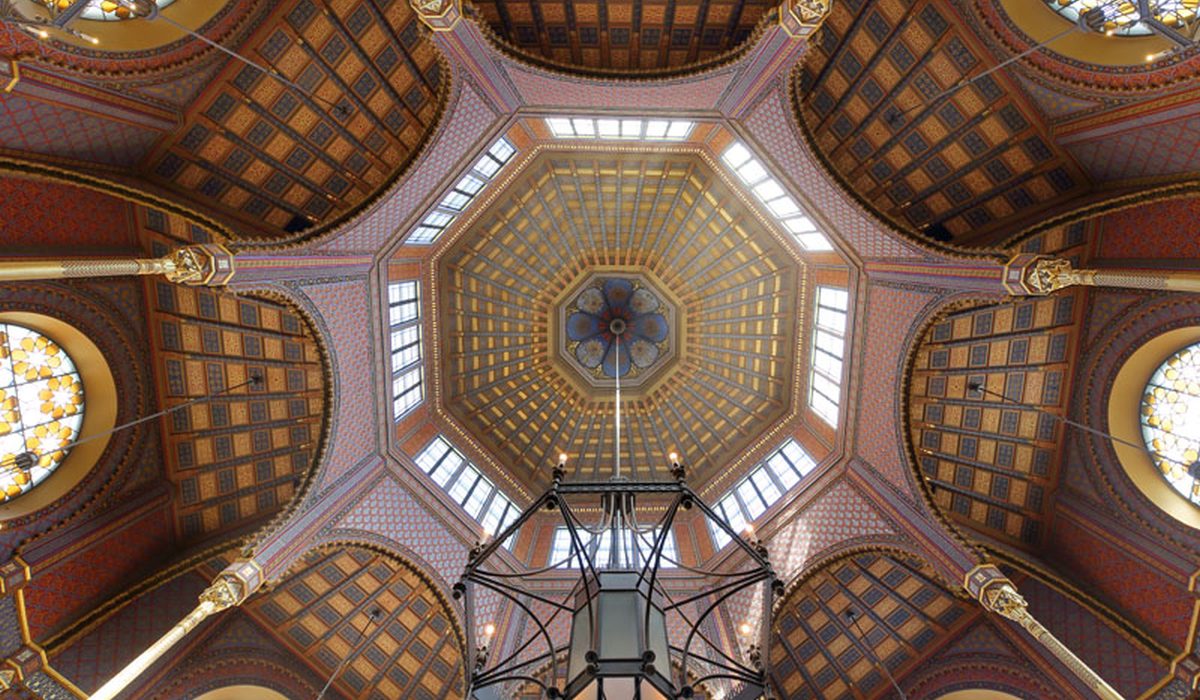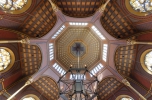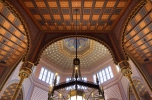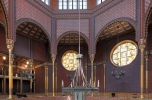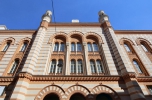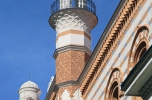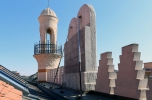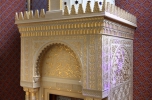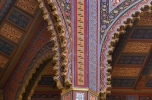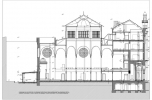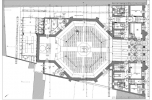An Explored Value
Reconstruction of the Synagogue in Rumbach Sebestyén Street
Architects: Tamás Kőnig, Péter Wagner
Text: Vilmos Katona
Photos: József Hajdú
An early Art Nouveau style synagogue is the one and only design by Otto Wagner which has been actually built in Hungary. Standing in Rumbach Sebestyén Street, this prayer house was built in a Moresque style with every detail influenced by Oriental arts. The floor plan is octagonal, the interior evokes the vaultings of monasteries accentuating the centrally positioned bima. The core of the building is focussed on the closed courtyard. In its present-day reconstructed condition it appears as if there has been no changes on its design for the past 150 or so years, but it does not only have religious functions: the central space does not only hosts masses but also concerts, the gallery houses a museum, the street front on the upper levels and the loft contains exhibition rooms and offices. The street front storeys are connected by a lift and stairs on each side. The sides of the passages opening to the street contain large spacious rooms that are opened into one another, whilst the side towards the synagogue houses office rooms. One of the connecting bridges leads above the choir of the prayer house opposite the ark across the atmosphere of 150 years.
Leading architects: Tamás Kőnig DLA, Péter Wagner DLA
Assistant architects: Ádám Rimely, Ágnes Holtság
Consultant architect: István Zalka
Projekt architects: Márk Perjés, László Ugrin
Art historians: Ferenc Dávid†, József Sisa
Structure: Elemér Kőnig, Ernő Zámbó
Building diagnostics: Ernő Zámbó, Kolos Marcell
HVAC: Lajos Erhardt, Péter Erhardt, Edit Seres
Electrical engineering: Ferenc Révhegyi, Ferenc Rajkai
Low-voltage current: Gyula Bosch
Technical management: Ákos Váradi
Garden designer: Ágnes Holtság
Environment: Róbert Csott, László Ilyés
Acoustics: Róbert Csott
Historical interiors: Kornél Baliga
Museum and service interiors: László Gergely
Fire protection: Antal Bársony, Róbert Kovács
Hospitality technology: Ágnes Straub
Special movements: Bálint Antal Korponai
Elevator: Miklós Tóth
Insulation: Attila Kövesi
